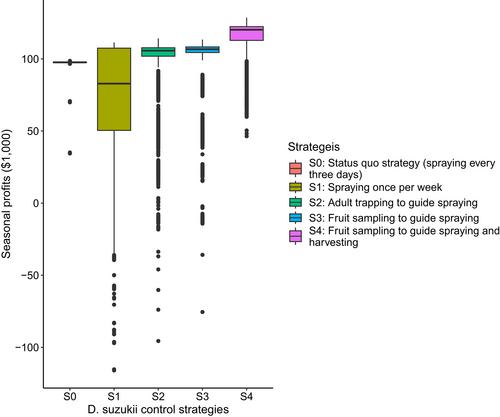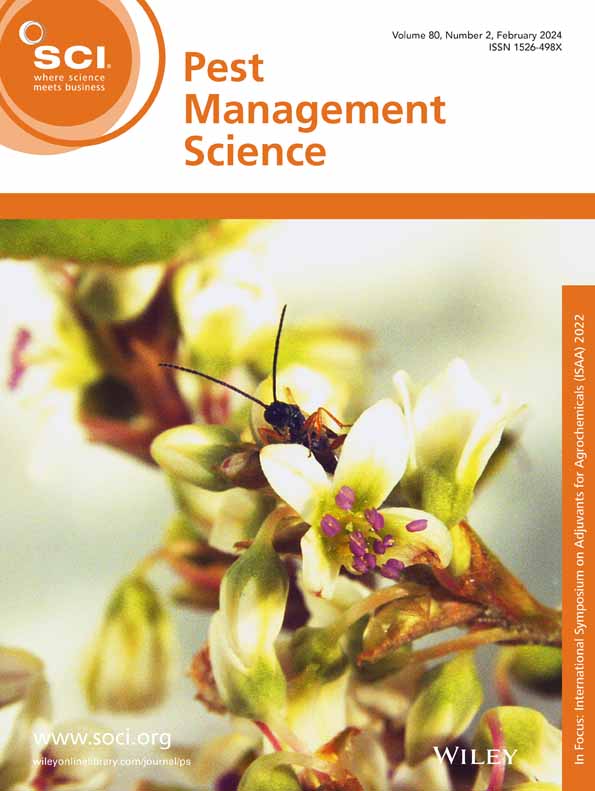Does monitoring pests pay off? a bioeconomic assessment of Drosophila suzukii controls
Abstract
BACKGROUND
Drosophila suzukii is a significant invasive pest that has caused high management costs and economic losses for blueberry growers in the United States. The status quo control strategy commonly used by growers is to apply pesticides proactively and frequently to reduce infestation. Recent studies have shown that the calendar-based spraying strategy might be unsustainable in the long term, making the reduction of pesticide reliance a top priority for the berry industry. Incorporating pest monitoring into the control strategy could be an option to improve efficiency while reducing pesticide usage. This study assesses the economic implications of monitoring-based control strategies compared to calendar-based spraying control strategies for organic blueberry production in Oregon. We combine a D. suzukii population model into the economic simulation framework, evaluate two monitoring methods (adult trapping and fruit sampling), and identify the profit-maximizing control strategy under different scenarios.
RESULTS
In the baseline scenario, control strategies that incorporate fruit sampling exhibit the highest average profits. Although the status quo control strategy (spraying every 3 days) generates higher average revenue than monitoring-based strategies, the cost from the higher number of pesticide application offsets the returns.
CONCLUSION
This study uses a novel bioeconomic simulation framework to show that incorporating fruit sampling can be a promising tool to reduce pesticide reliance while controlling D. suzukii infestation. These findings provide clearer information on the economic viability of using monitoring-based pest control strategies in organic berry production, and the assessment framework sheds light on the economics of pest management. © 2023 The Authors. Pest Management Science published by John Wiley & Sons Ltd on behalf of Society of Chemical Industry.


 求助内容:
求助内容: 应助结果提醒方式:
应助结果提醒方式:


